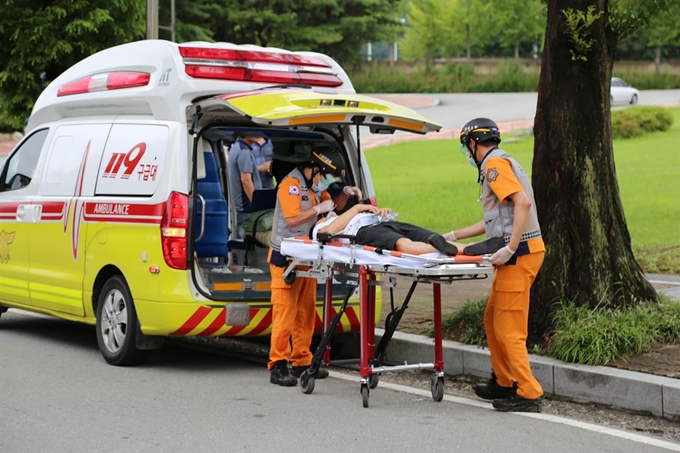
The research team estimated that heart attack patients from the first or second floor are 1.82 times more likely to fully recover than those from the third floor or higher. (image: Gyeongbuk Fire Service Headquarters)
SEOUL, Nov. 22 (Korea Bizwire) — A recent study has revealed that individuals who suffer from a heart attack at a location higher than the third floor of a building have a lower chance of full recovery than those who suffer from the same illness on the first or second floors.
Researchers from Kangdong Sacred Heart Hospital analyzed the neurological prognosis of 1,541 individuals over 20 years of age who suffered from a heart attack between 2015 and 2018 based on their location in a building.
The results showed emergency rescue by 119 paramedics proved to be more effective for residents on the first or second floor than those living on the third floor or higher.
The median time spent by paramedics to reach both residents on the first or second floor and those on the third floor or higher was 7 minutes.
However, the time spent on conducting emergency interventions at the scene and transporting the patient to a hospital was 12 minutes for the residents living on the first or second floor, 4 minutes faster than those living on the third floor or higher.
This difference heavily influenced the prognosis of the patients.
Among patients who regained spontaneous respiration before they reached the hospital, 16.4 percent were from the first or second floor, while only 9.9 percent were from the third floor or higher.
Also, among those who fully recovered after being treated at a hospital, 16.8 percent were from the first or second floor, while only 8.3 percent were from the third floor or higher.
The research team estimated that heart attack patients from the first or second floor are 1.82 times more likely to fully recover than those from the third floor or higher.
It takes a significant amount of time to bring a patient living on higher floors out of the building even if the rescue team reaches the location early.
In addition, the research team explained that the use of automated external defibrillators (AEDs) may have been more difficult on higher floors.
In fact, the usage rate of AEDs was 2.1 percent for first and second floor residents, and only 0.2 percent for those living on the third floor or higher.
“We have to ensure that AEDs are distributed to higher floors and educate the residents on how to use them,” said Prof. Cho Kyu-jong, head of the research team.
H. M. Kang (hmkang@koreabizwire.com)





![[Kobiz Infographics] How to Care for Your Elbows and Heels [Kobiz Infographics] How to Care for Your Elbows and Heels](http://koreabizwire.com/wp/wp-content/uploads/2014/04/뷰티사각지대-영문-썸네일-370x511.jpg)
